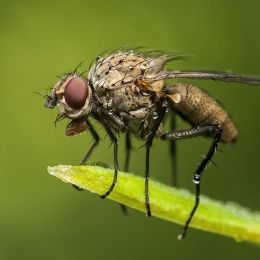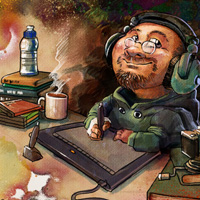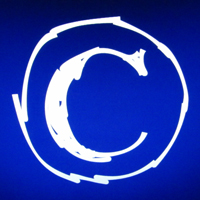- photo contests ▼
- photoshop contests ▼
- Tutorials ▼
- Social ▼Contact options
- Stats ▼Results and stats
- More ▼
- Help ▼Help and rules
- Login
31 - Color Map Normal Mapping - Blender Tutorial

For more advanced Blender users, you probably have at one time or another wanted to create something very detailed and realistic, only to realize that one modeled head or one cool building has taken an enormous amount of memory, and rendering (or worse, animating!) something like that would probably take days! Well there is an awesome trick you can use to create intricate details and design shading, with a relatively low amount of faces. You can use blender to create and apply normal maps, which are RGB colored maps that can be used as a texture to calculate how light will bounce of an objects surface. All you need is blender and photo-editing software to tweek the picture a bit.
submitted: 5 years and 3921 days ago
32 - Texture Normal Mapping - Blender Tutorial

To familiarize yourself with normal maps and how they work, we will begin by using the texture engine in Blender to create our first normal map. This process is very useful for creating quick and non-specific normal maps for your projects that need a bit of texture.
submitted: 5 years and 3921 days ago
33 - Normal Mapping - Blender Tutorial

Normal Mapping in 3D graphics development is the process of using an RGB color-map to create a three-dimensional relief on a two-dimensional plane. The source for the normal map in blender can either be a texture already installed in Blender, or using an external picture-file (.jpg, .jpeg, .bmp, and so on) and loading it as a normal map.
submitted: 5 years and 3921 days ago
34 - Bump Mapping - Blender Tutorial

This tutorial was created using Blender v2.49
Bump Maps are textures that store the relative height of pixels from the viewpoint of the camera. The pixels seem to be moved in the direction of the facenormals, either in direction to or away from the camera. You may either use greyscale pictures or the intensity values of a RGB-Texture (including images).
submitted: 5 years and 3921 days ago
35 - Realistic Water using Fluid Sim and Yafray - Blender Tutorial
36 - Landscape Modeling III: Exporting as a Heightmap - Blender Tutorial

In this tutorial, we will show you how to export your beautiful terrain to a heightmap that can be used in most 3D graphics engines. The benefit to doing this as opposed to just exporting your mesh is that many engines have a special process for dealing with terrains as opposed to regular meshes where it divides the terrain up into different sections so that it can subdivide regions closer to the camera more for greater detail, and also cull (not render) regions outside the camera's field of view, saving precious processing time. This structure is called an oct tree and is a highly optimized way to render large meshes such as terrains.
submitted: 5 years and 3921 days ago
37 - Landscape Modeling II: Texture Stenciling - Blender Tutorial

This is a continuation of the previous tutorial, Landscape Modeling I: Basic Terrain. In this tutorial, we will make our terrain look even better by using some texture stenciling to add multiple textures where we want them in the landscape. This tutorial assumes that you have a basic understanding of how to use Blender (how to add/remove a mesh, how to change views, etc...)
submitted: 5 years and 3921 days ago
38 - Landscape Modeling I: Basic Terrain - Blender Tutorial

By the end of this tutorial you'll have the know-how to create your own flexible, realistic terrain utilizing multiple textures for different ground types. This tutorial assumes that you have the very basic understanding of using Blender (how to add/remove a mesh, how to change views, etc...)
submitted: 5 years and 3921 days ago
39 - Making Landscapes with Heightmaps - Blender Tutorial

This tutorial will show you how to make advanced terrain such as mountains using Blender and gimp or any other image editing software. Blender has the ability to use height maps to create meshes. Height maps are black and white images with white representing the highest point and black the lowest.
submitted: 5 years and 3921 days ago








